For our third day in Tokyo, arrangements were made for a personal guide. Her name was Yama which she explained meant mountain in Japanese. She was delightful and very knowledgeable and it was much fun to share the day with her. The first stop on this day was the Shinjuku Gyoen National Garden and one of the first sightings was the old, quaint-looking Groundskeeper’s Cottage.
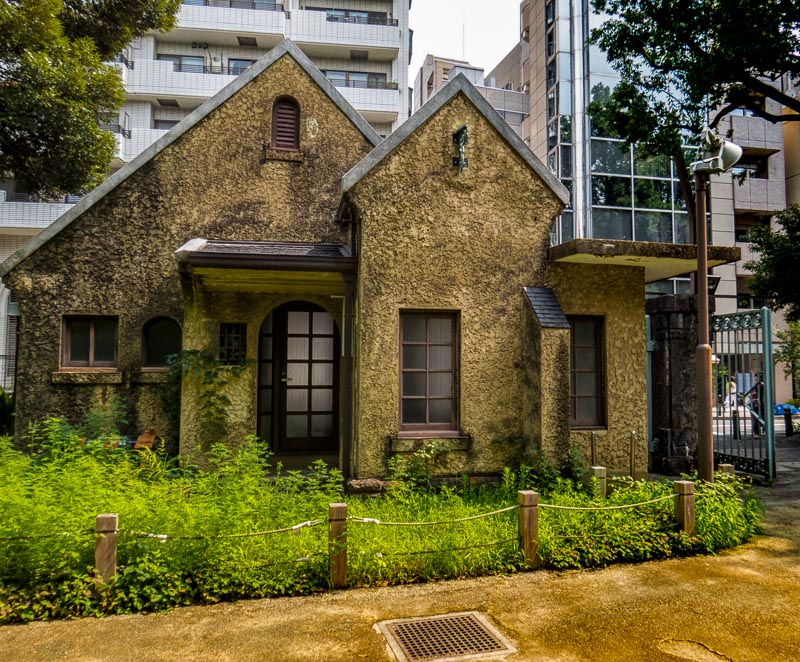
As we walked along the path, Yama related some of the history of the garden which originated in the Edo period and has undergone many revisions. One indication of the age of the garden was the size of the tree trunks.
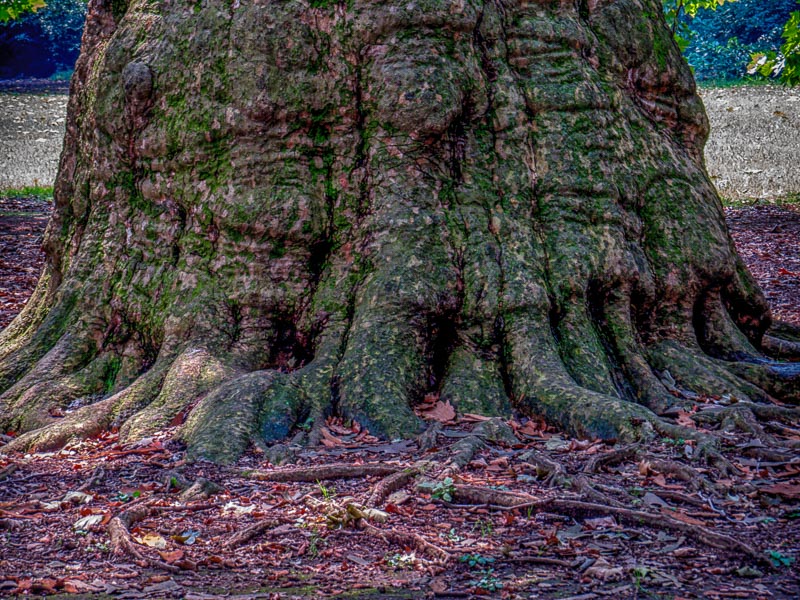
As Better Homes and Gardens indicates, “Japanese gardens combine the basic elements of plants, water, and rocks with simple, clean lines to create a tranquil retreat.**”, and this garden had a number of water features. The turtles are also a cultural symbol of longevity and they were in evidence as we strolled along the ponds.
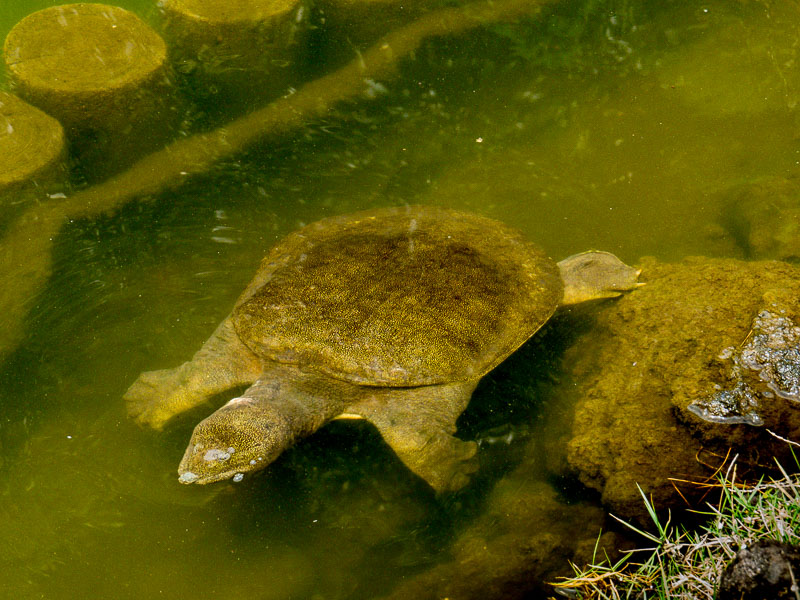
Strategically placed arched bridges allowing for reflections are also a common feature in Japanese gardens.
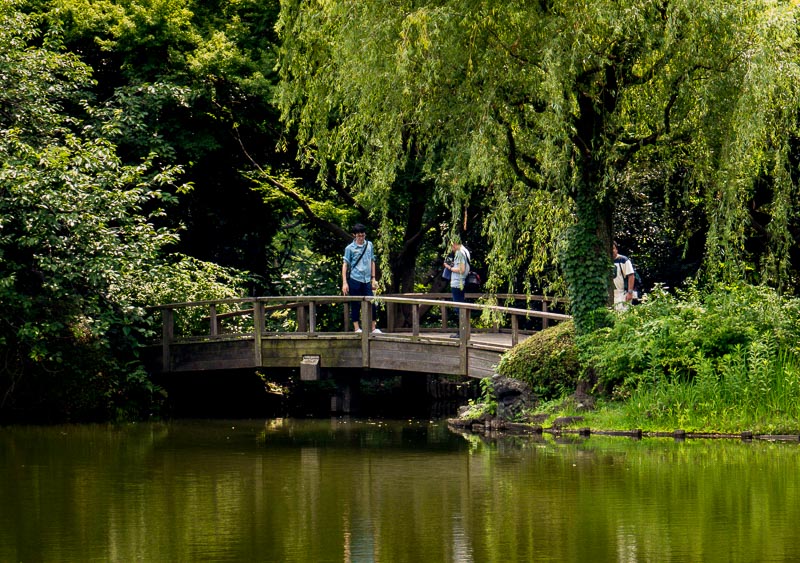

Another popular feature is the lantern or Tōrō that we described in our previous posts.
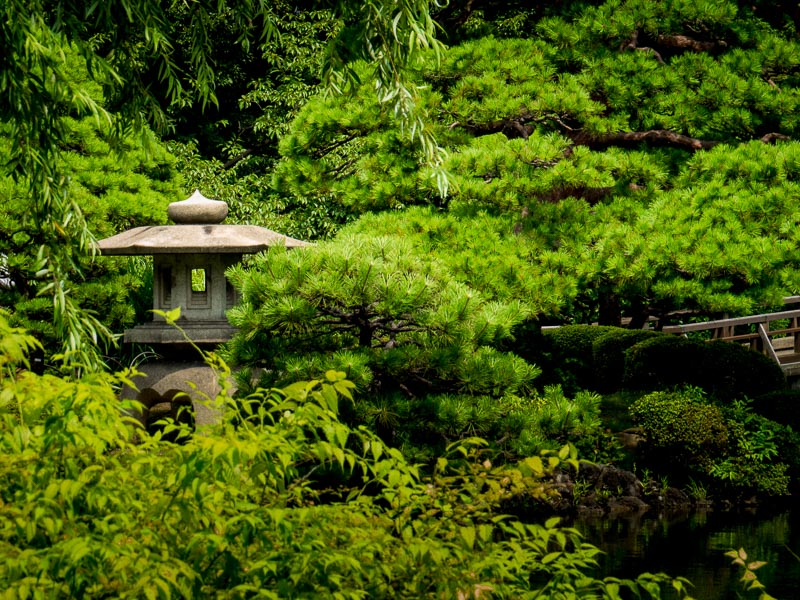
As we wandered along we were reminded from time-to-time that we were still within a large city.

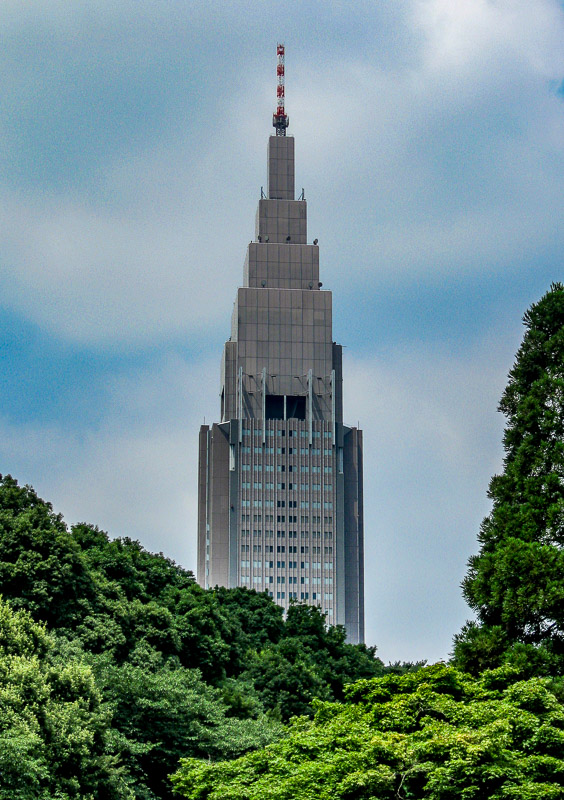
This pagoda-like structure, a traditional tea house, provided a very nice stopping point and offered numerous photo opportunities.
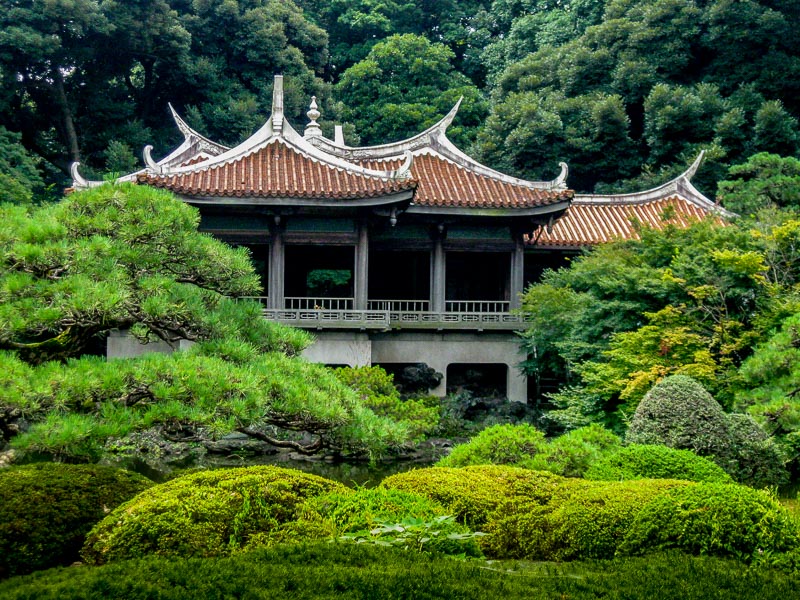
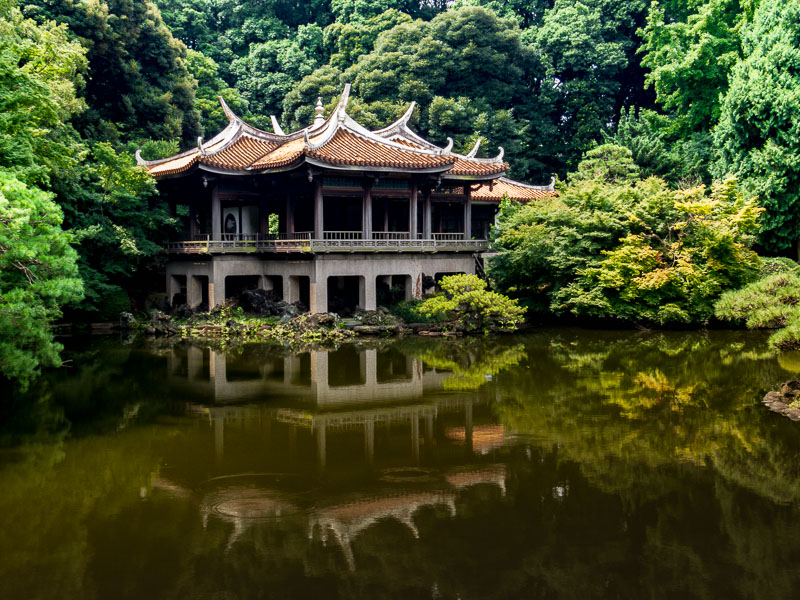
As we were circling back to the area from which we entered, we came across a group of young girls seemingly preparing for a more formal event or celebration.
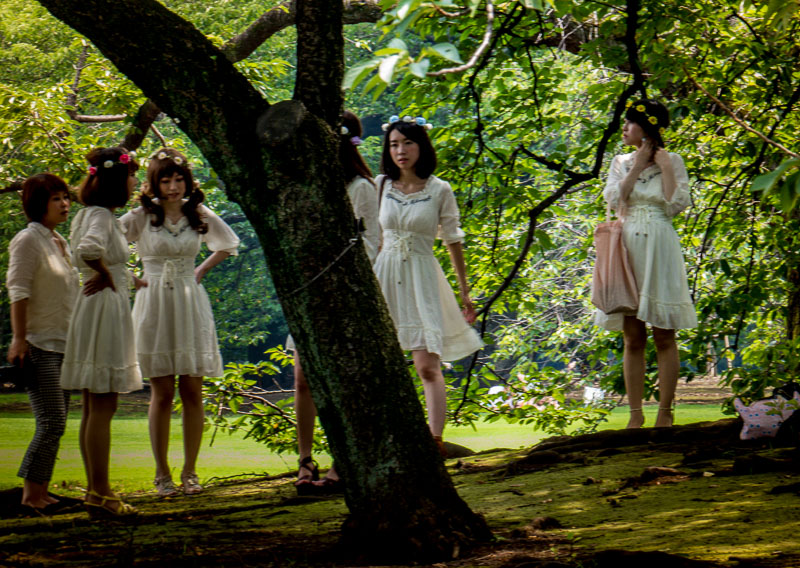
Before we left the garden, we stopped at the visitor’s center to cool off a bit and to use the amenities. I noticed a vending machine which appeared to be offering meals of many varieties which could be selected from the charts to the right!

We appreciated that we were on vacation while others needed to attend to their rituals of daily living as evidenced by this young girl presumably with her dad perhaps going to, or coming from school.
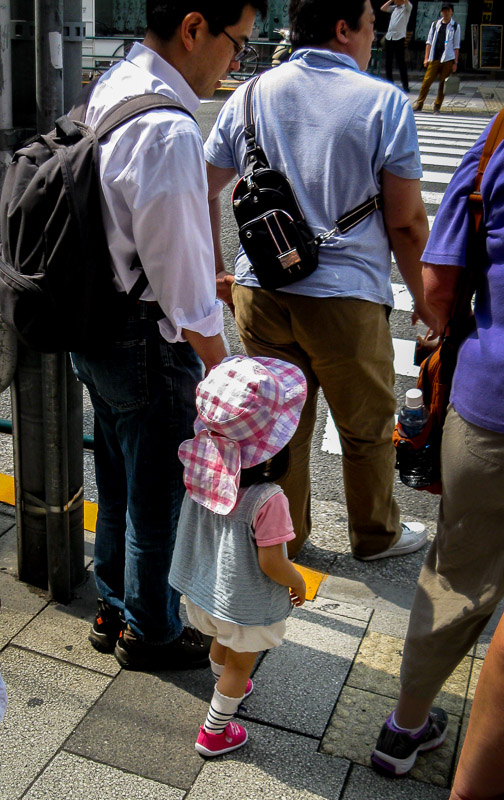
Next, it was off to the subway…

The subways had several unique features. The yellow squres are actually imprinted walkways with raised dots. The raised areas could be felt through shoes and are used to guide the visually impaired.
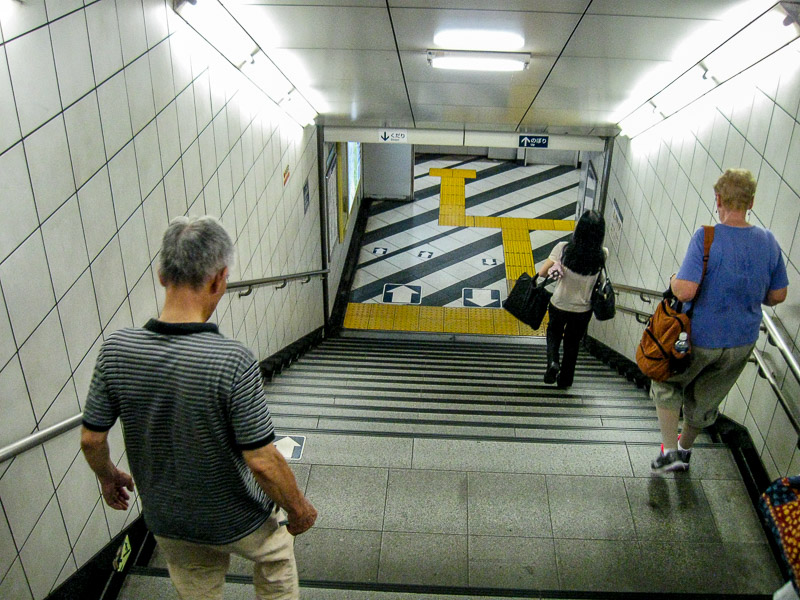
We also noted caretakers cleaning the various structures.
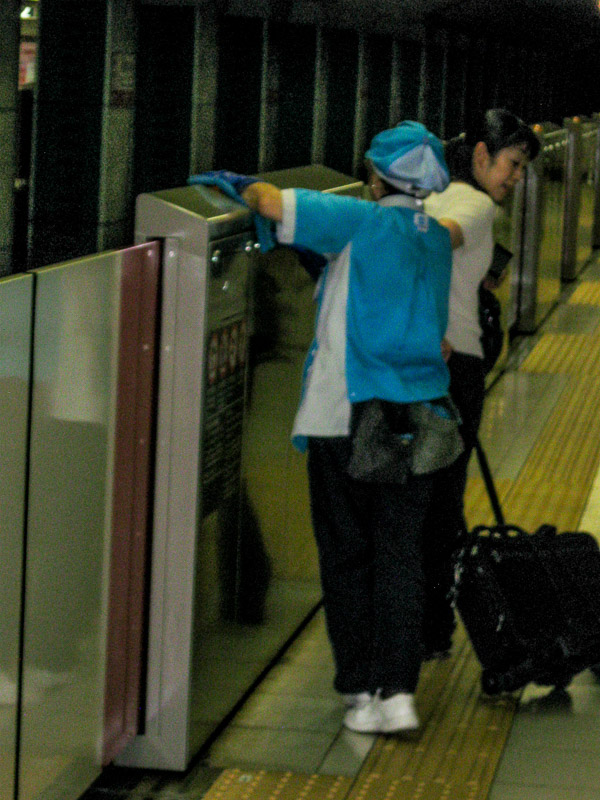
This young man was dutifully waiting in a designated line to enter a specific train car or area. Notice the blue and white lines which I understood indicated where different train sections/cars would align. Standing closer to the tracks than this area is discouraged.
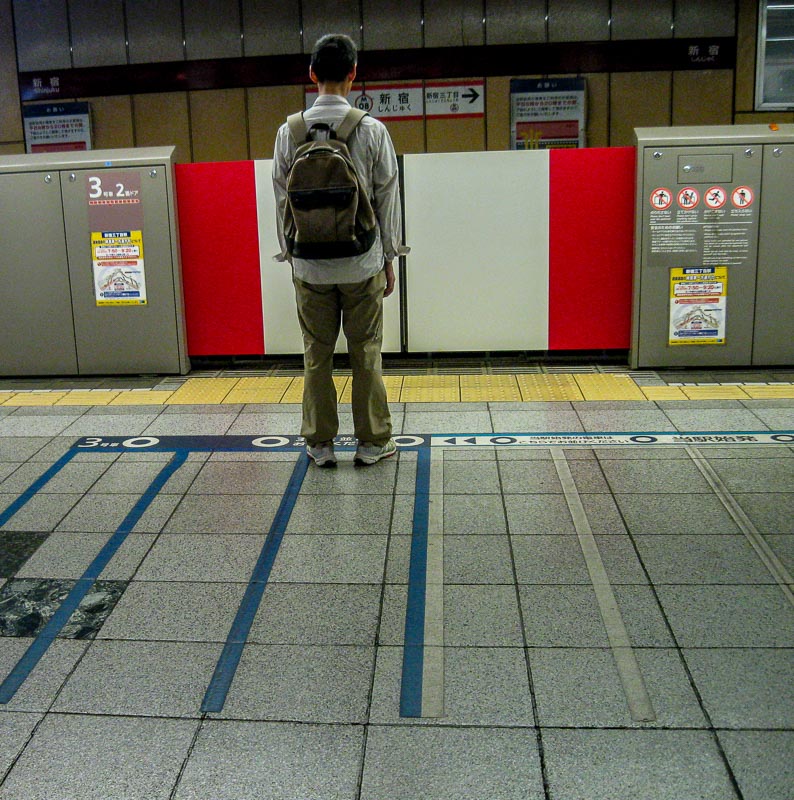
Exiting the subway, we were only a short walk away from the famous Harajuki St. where the young and trendy congregate. (So what was I doing there?)
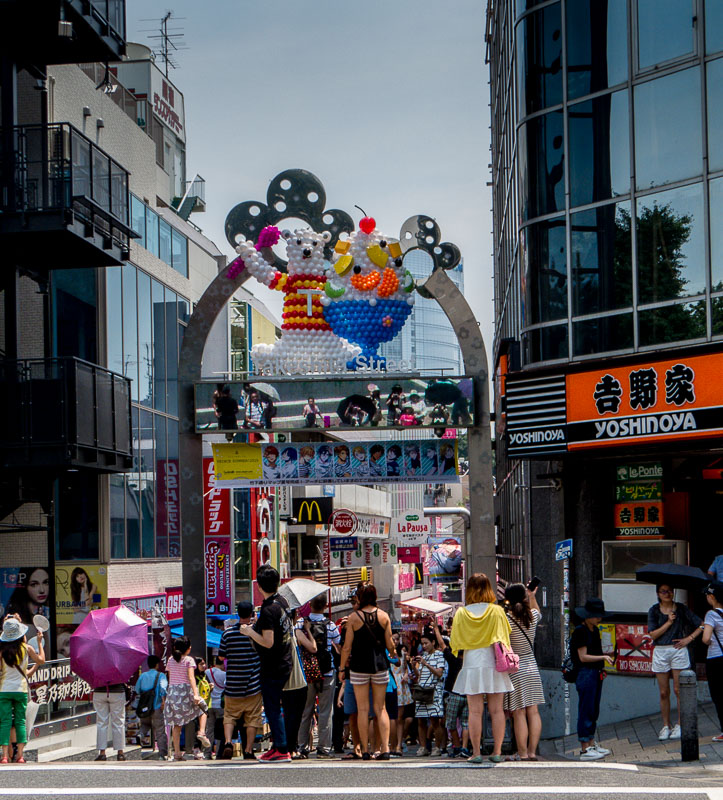
It was crowded.
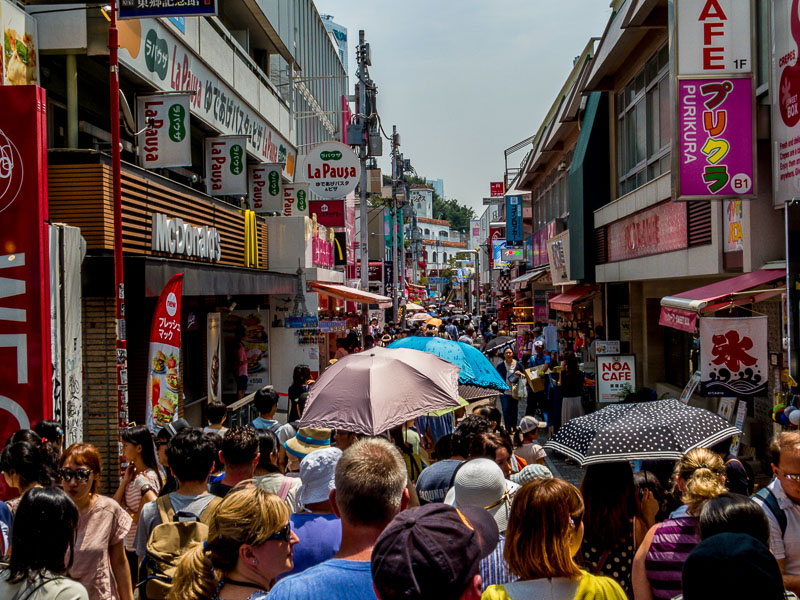
This shop is indicative of the type of apparel that was for sale.
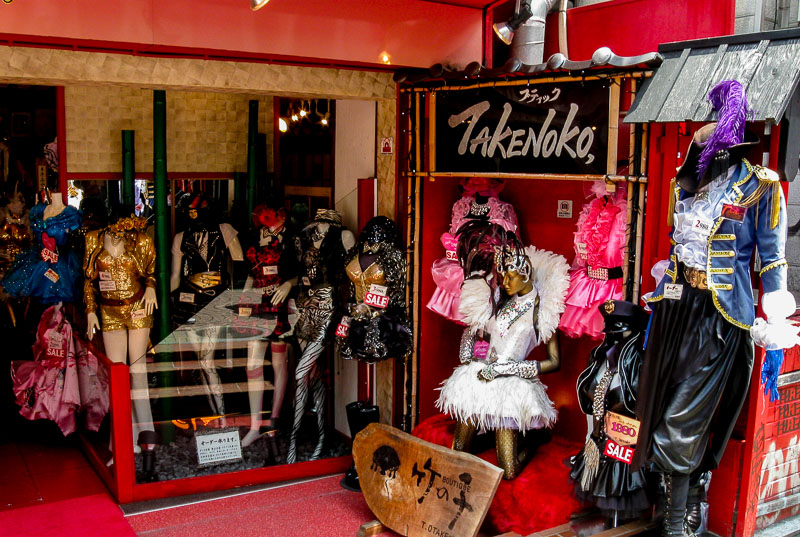
Of further appeal to the younger crowd were the popular Japanese anime style banners which has also attracted the appreciation of some of the older groups.
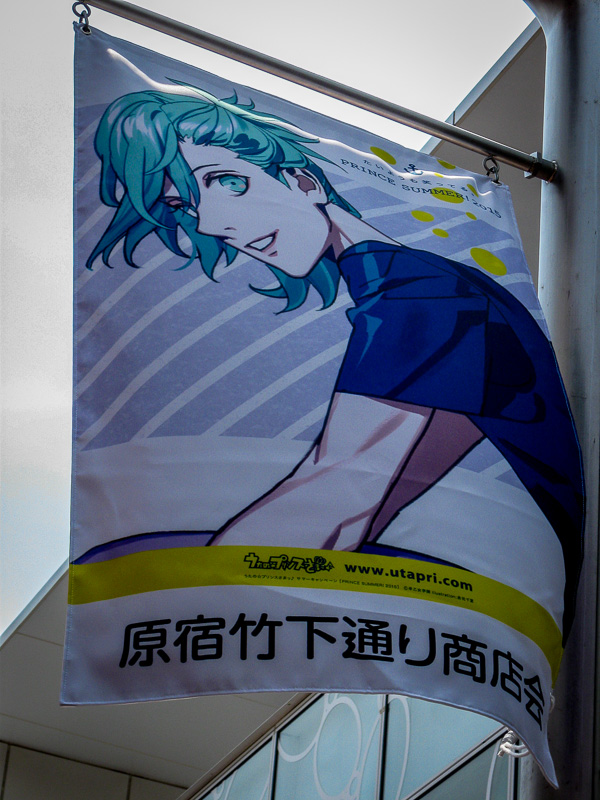
And what trendy area would be without a Starbucks?

To be continued…
** http://www.bhg.com/gardening/design/styles/elements-of-a-japanese-garden/
Read more about our trip to Japan in 2015:
- Tokyo (2015) Day 1 – Meiji Shrine
- Tokyo (2015) Day 1 – Imperial Palace East Gardens
- Tokyo (2015) Day 1 – Sensoji (Asakusa Kannon) Buddhist Temple
- Tokyo (2015) Day 1 – Wrapping Up
- Tokyo (2015) Day 2 – Off To Mount Fuji And…
- Tokyo (2015) Day 2 – Hakone, Lake Ashi and Mt. Fuji
JBRish.com originally published this post